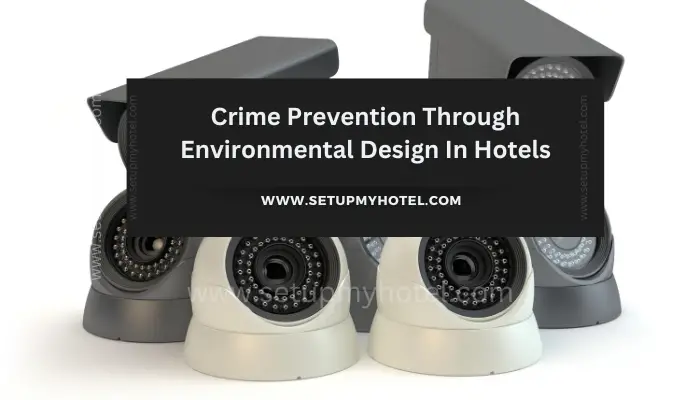Crime Prevention Through Environmental Design In Hotels
Crime Prevention Through Environmental Design (CPTED) is an approach that focuses on designing the built environment to reduce opportunities for crime and enhance the safety and security of a place. This concept can be applied to various settings, including hotels. Here are some principles and strategies for implementing CPTED in hotels:
- Natural Surveillance:
- Design the hotel layout to maximize visibility and sightlines. Ensure that public spaces, entrances, and common areas are easily observable from staffed areas, such as the front desk.
- Use landscaping and lighting to eliminate blind spots and create a clear line of sight.
- Territorial Reinforcement:
- Clearly define the boundaries of the hotel property through the use of landscaping, signage, and architectural elements. This helps establish a sense of ownership and control.
- Use fencing, low walls, or other physical barriers to separate public and private areas.
- Access Control:
- Limit access points to the hotel, ensuring that entrances are well-monitored and controlled.
- Implement electronic key card systems for guest room access to enhance security and control entry.
- Provide controlled access to back-of-house areas to prevent unauthorized personnel from entering sensitive areas.
- Maintenance and Design:
- Maintain the physical appearance of the property to discourage criminal activity. A well-maintained and aesthetically pleasing environment can create a positive atmosphere and deter potential offenders.
- Use design elements such as lighting, color, and landscaping to enhance the overall environment and promote a sense of safety.
- Target Hardening:
- Implement security features, such as surveillance cameras, alarms, and proper lighting, to deter criminal activity.
- Ensure that doors, windows, and other access points are secure and resistant to unauthorized entry.
- Community Engagement:
- Foster a sense of community among guests and staff. This can create a supportive environment where people look out for each other.
- Encourage communication between hotel staff and local law enforcement to address security concerns and share information about potential threats.
- Emergency Preparedness:
- Develop and communicate emergency procedures to both staff and guests.
- Install emergency communication systems and ensure that emergency exits are clearly marked and easily accessible.
- Staff Training:
- Train hotel staff in security measures, emergency response protocols, and customer service practices that contribute to a secure environment.
- Encourage staff to be vigilant and report any suspicious activities promptly.
By incorporating these CPTED principles into the design and operation of hotels, property owners and managers can contribute to a safer and more secure environment for guests and staff. Regular assessments and updates to security measures should be conducted to adapt to changing circumstances and emerging threats.
Crime Prevention Through Environmental Design (CPTED) has become a recognized tool for the architect and developer in the construction of a lodging or hospitality facility.
The basic principles of CPTED include target hardening (controlling access to neighbourhoods and buildings and conducting surveillance on specific areas to reduce opportunities for crime to occur) and territorial reinforcement (increasing the sense of security in settings where people live and work through activities that encourage informal control of the environment).
Some CPTED considerations for a lodging facility might include:
- Ability to see persons on an elevator at the lobby level from the front desk.
- Entrances are well-lit and designed to eliminate areas in which a person might hide.
- GuestDefinition of Guest in Hospitality Industry: A guest is the most important person in any business. A... room corridors are well-lit and without areas in which a person might hide.
- Lighting on the exterior of the structure that will not be screened out by landscaping or building features, an avoidance of hiding places.
- Pool and health club locations where a ready check might be made by staff passing in the vicinity of the facility.
- In general, a layout that will maximize the sense of openness and awareness of persons in the territory (territorial reinforcement).










